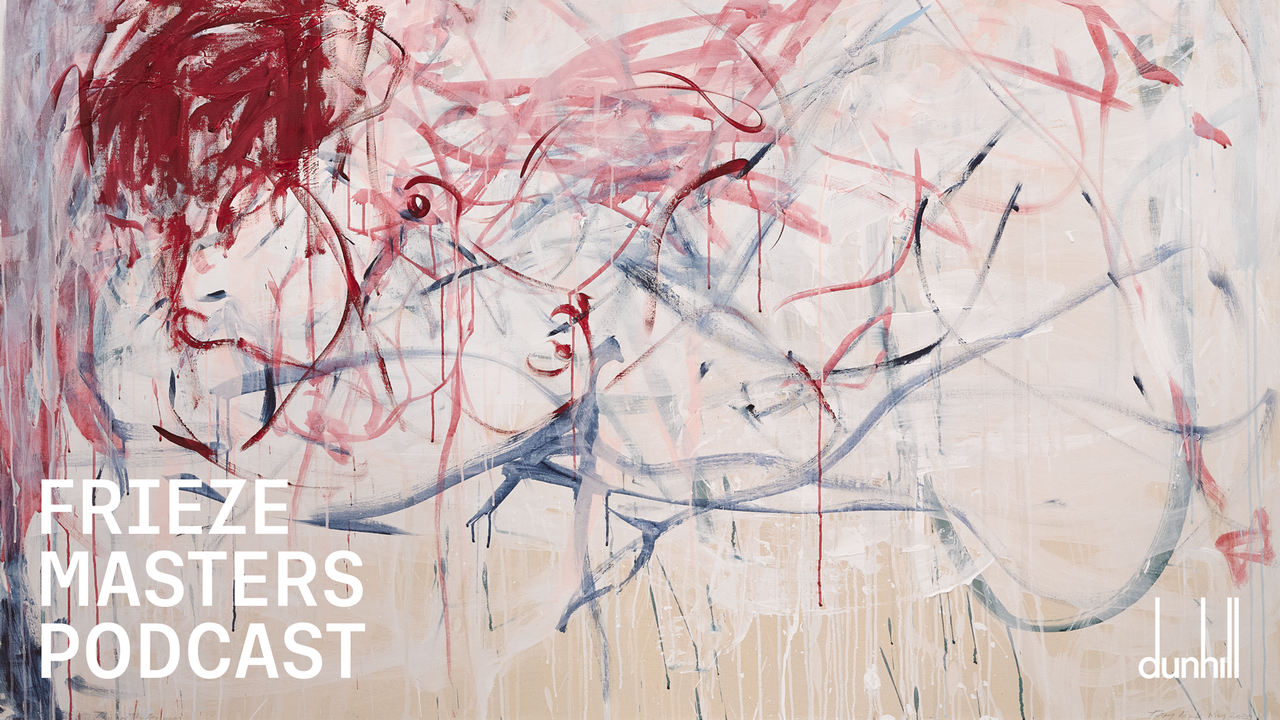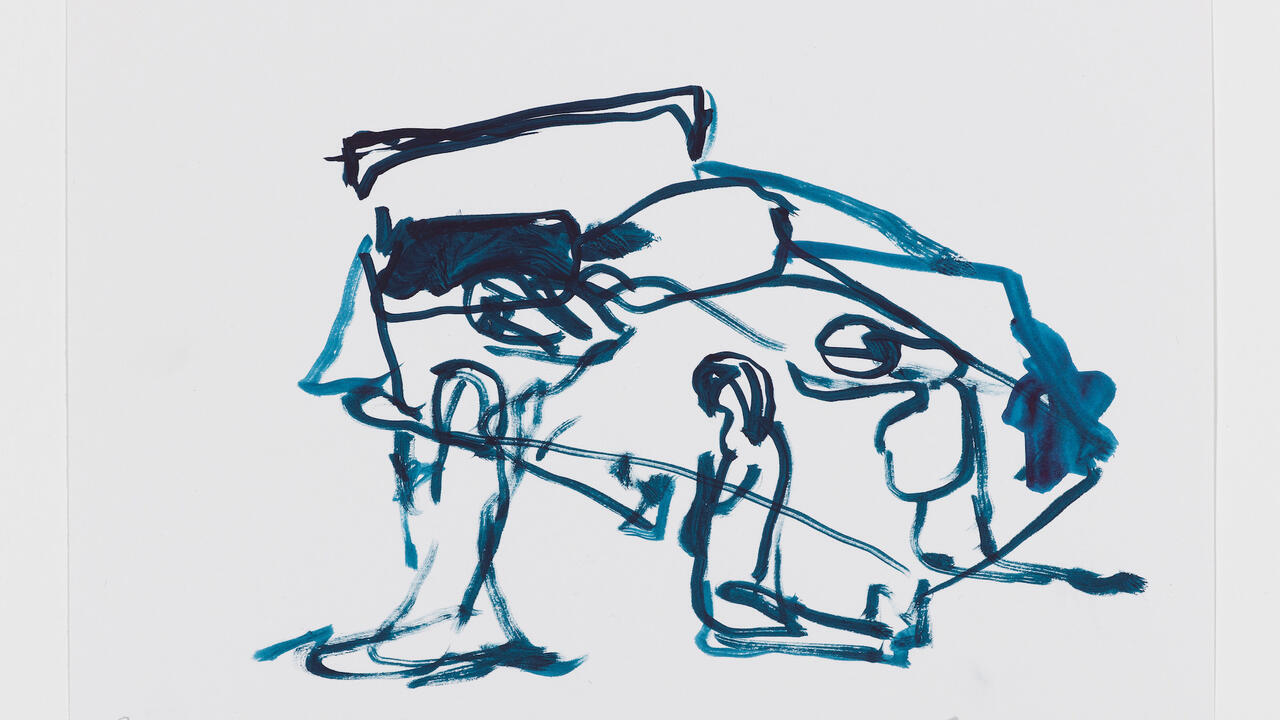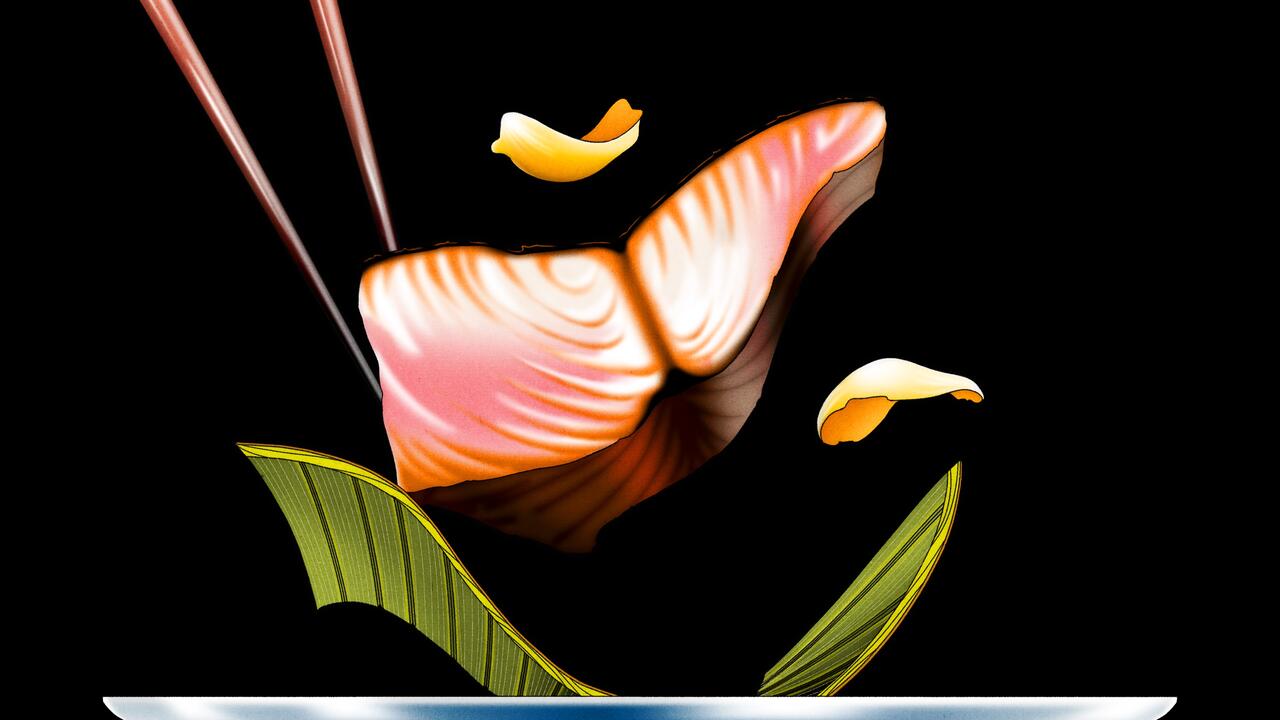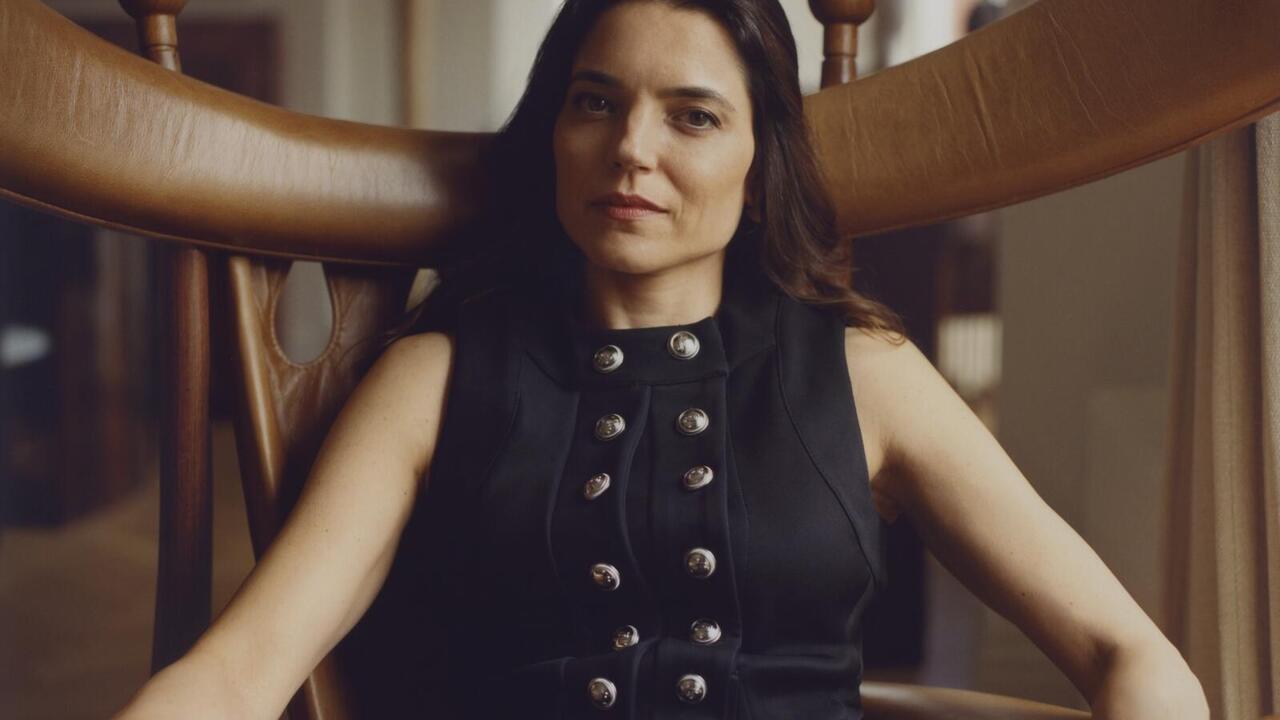Textiles as a Form of Feminist Dissent
As major shows open on both sides of the Atlantic, we examine the medium’s subversive relationship with gender
As major shows open on both sides of the Atlantic, we examine the medium’s subversive relationship with gender

My father, an architect, has a story he likes to tell about his grad-school days at the University of Pennsylvania. For their final project, he and the other students had to build models of the buildings they had designed in class. One of the few women on the course declined to use card stock or balsa wood like everyone else; instead, she knitted her building, and the professor failed her.
I first heard that anecdote when I told my dad I was starting work on a book called Art Monsters (2023) about the conflict between professionalism and monstrosity for women artists. I wanted to write about the feminist will to take up space, to thwart the values received from the patriarchy, to work in an aesthetics that could be ours, instead of one that merely rebelled against theirs.
Alas, I couldn’t find a way to integrate my dad’s story into Art Monsters, but I did take some inspiration from his fellow student’s turn to textile to realize her vision. The notion of narrative as a thread is central to the book’s construction: non-linear, non-hierarchical, thesis-resistant. Subdivided by breaks in the narrative line, the text itself is not unlike a work of textile art. At least that’s the image I had in mind as I stepped back to look at the finished manuscript. The writer and scholar Sara Ahmed observed in Living a Feminist Life (2017): ‘Feminism begins with sensation.’ And what is more sensuous than textile – a haptic art that calls out to be touched, that restores touch to the aesthetic? Perhaps, then, feminist art begins with weaving.

In the early chapters of Art Monsters, I drew on textile history to think about how certain modes of art-making were marginalized and feminized in European countries. Referencing foundational works of feminist art history like Griselda Pollock and Rozsika Parker’s Old Mistresses: Women, Art and Ideology (1981), or Parker’s The Subversive Stitch: Embroidery and the Making of the Feminine (1984), I looked at the ways in which embroidery, for instance, was for centuries an occupation for both men and women, but in the early modern period became codified as ‘professional’ when practised by men, who founded guilds that women were prevented from joining, and ‘amateur’ when practised at home by women, even those who were earning money from their needles.
A whiff of amateurism clearly still clung to textile work in the architecture programme my father attended in the early 1970s. Whether or not the female student’s project had some kind of engineering-based flaw, it seems evident that she failed not only because she disobeyed the rules, but because of the way she disobeyed them. She used materials – fabric and thread – that were coded as feminine, artsy-craftsy, unserious. Yet such is the subversive power of the stitch that 50 years on from her take on that assignment, we are still talking about it.
The power of textile art to surprise, unsettle, provoke and disobey is the subject of an upcoming show at London’s Barbican Art Gallery. ‘Unravel: The Power and Politics of Textiles in Art’, curated by Lotte Johnson and Wells Fray-Smith with Amanda Pinatih of the Stedelijk Museum in Amsterdam, contends that contemporary artists have turned to textiles and fibre in their work ‘to grapple with systems of power and hierarchies, and therefore histories and lived experiences of oppression and extraction, in order to forge new visions of the world in which we live’, as Johnson puts it in the catalogue.

The Barbican show is one of several in recent times to explore the relationship between gender and textiles, as well as recently closed exhibitions at London’s Two Temple Place and Richard Saltoun Gallery. An upcoming exhibition at the Smithsonian American Art Museum, ‘Subversive, Skilled, Sublime: Fiber Art by Women’, which opens in May, focuses on American textile artists. It seems, pardon the pun, this is a knot curators are eager to untangle; perhaps the turn to textile is a return to the material of art, to tactility, to physical intimacy, at a time when we are being told that bodiless, screen-based AI is the future to which we are all condemned. How glorious it is to revel in the look of thick, twisted, heavy, messy, multicoloured yarn! Perhaps it’s a product of the renewed interest in the stories and art-making of women and other marginalized people, a way to feminize and decolonize the gallery space, to ask questions about labour and exploitation, about climate and extraction. More likely, it’s some combination of these factors, intertwined, impossible to separate.
Making work with textiles is a form of ‘refusal’ and ‘dissent’, writes the weaver Faith Gillespie in ‘The Masterless Way: Weaving an Active Resistance’, from the book of collected essays Women and Craft (1987). Gillespie was referring to craftspeople as workers without line managers, creating not to meet market demand but the imperatives of their hearts, ‘making what is wanted and needed at quite another level of human life’. But, considered in their global context, textiles have much to tell us about the way we live, the way we feel, the way the world is organized. They have been used to gender and hierarchize, but also to resist and bear witness. They play a key role in histories of circulation and exchange, displacement and appropriation, but they also, Johnson writes, ‘embod[y] potent knowledge systems (often rooted in nature) that have been extracted, co-opted and appropriated through colonialism; and more’.
With these histories of dissent in mind, ‘Unravel’ sets out to explore what exactly is political about textiles. That might be upending the seeming folksiness of quilt-making through the work of Faith Ringgold, or exploring the portraits that Małgorzata Mirga-Tas and LJ Roberts make of their communities using found fabric. It could be revealing the surprise twist of Margarita Cabrera’s soft sculptures of cacti made from discarded US Border Patrol uniforms, onto which immigrant communities in South Texas have embroidered images recalling their border crossings. It might mean revisiting Tracey Emin’s tapestry works of the 1990s, like 1999’s No chance (WHAT A YEAR), which gives voice to her defiance toward and alienation from society and the state, or seeing how something as seemingly floppy and ephemeral as fabric can be transformed in the work of an artist like Sheila Hicks into something as imposing, structural and enduring as architecture.

When I met with Johnson and Fray-Smith at the Barbican in November to talk about their plans for the show, I shared the story of my father’s classmate. No sooner had I said ‘architecture school in Philadelphia’ than Fray-Smith asked if it was the University of Pennsylvania: it turned out her father also did his architecture degree there. We marvelled at the coincidence: daughters of architects trained at the same school at the same time, both passionate about the architectural qualities of textile, meeting as curator and critic to discuss a landmark show about textiles.
At Penn, our fathers studied with the renowned architect Louis Kahn. So, too, did Hicks – albeit at Yale, where Kahn taught before moving to Penn. There, as the artist recounted on art historian Katy Hessel’s podcast The Great Women Artists in 2022, the departments of fine art and architecture were connected by a bridge, and you could wander from one to the other. Kahn was known for his distinctively psychological approach to architecture, which, at times, involved directly addressing the material. As he famously said in a masterclass given at Penn in 1971: ‘You say to brick, “What do you want, brick?” ‘Brick says to you, “I like an arch.”’ That is to say: the material will dictate what it needs.
Hicks similarly interrogates her materials. In the video Hanging by a Thread (2017), she describes her interest in ‘the way [thread] wants to speak, what it can do, and what you can do with it’, or the way an installation space will tell you ‘what it wants, what it’s willing to do’. Her contribution to the Venice Biennale in 2017 took its cue from the structure and textures of the 12th century shipyard in which the exhibition is housed to create what she described in a film produced for that year’s biennial as ‘something subtle […] where art meets architecture’. Thinking about what grows on brick and what brick yields, Hicks affixed large, brightly coloured, knitted blobs to columns like barnacles, while rivers of red and yellow yarn travelled down the cracks in the bricks. Her river of coloured thread reminds me of Kahn’s design for the Salk Institute in San Diego, which features a thin channel of water leading from a central fountain out towards the edge of the horizon.

Hicks is not the only fibre artist to have challenged the prevailing hierarchy between textile (craft) and art. Magdalena Abakanowicz’s ‘Abakans’ sculptures of the 1960s and ’70s, on view at Tate Modern last year, comprise monstrously large, cocoon-like woven spaces that seem – and smell – almost alive; suspended from the ceiling, her weavings and tapestries are like strange, unknowable beings. Hicks has said that she wants her work to be something other than sculpture or painting, neither some ‘dead’ object in the middle of the room nor something attached to the wall, but rather a work that might occupy some third dimension. For both Abakanowicz and Hicks, fibre can be used to form a dwelling – a life-sized realization of my father’s classmate’s gesture at challenging the orthodoxy of architecture. Monumental and communicative, ambiguous and strange, the works of these artists are the revenge of fibre art on those Penn professors of the 1970s and their conservative notions of structure and material.
Hicks’s own art evolved out of her extensive travels during the late 1950s in South America, learning from the native weaving traditions in those places. ‘I began teaching myself how to weave,’ she told Jennifer Higgie in this magazine in 2015, ‘because I was interested in how the pre-Incas structured thought with threads, with lines.’ She studied for years with weavers in Mexico and Morocco, forging her contemporary art from their folk practices. ‘Fibre is my alphabet,’ she told Higgie.

But for the Chilean poet and artist Cecilia Vicuña, an ancient textile is ‘the alphabet we can no longer read’, as she puts it in her essay ‘Palabra e Hilo’ (Word and Thread, 1996). Vicuña’s works replicate the quipu knotting system used in Andean cultures to record-keep, as well as being a method of communication, an idea which so inspired Hicks. For the scholar Julia Bryan-Wilson, author of Fray: Art and Textile Politics (2017), Vicuña’s comment ‘suggests that indigenous knowledge systems might be fragile threads that have been severed by colonial regimes and cannot easily remember their own histories’.
Another Chilean artist included in the show is Violeta Parra, whose work, the curators write, ‘consciously engaged with folk and ancestral weaving traditions to political ends.’ Parra’s works on burlap were among the first arpilleras (‘burlap’ in Spanish, or protest works made by women under Pinochet’s regime), and employ ‘complex techniques like couching, braiding and ridged stitching [to create] layered tapestries that protest for peace and document scenes of resistance among the Mapuche, an Indigenous culture in what is now Chile.’ Her tapestry Fresia y Caupolicán (Fresia and Caupolicán, 1964–65) depicts a key moment in Alonso de Ercilla’s La Araucana (1569), an epic poem about the Spanish conquest of Chile, in which Fresia, the wife of Caupolicán, a Mapuche leader captured by the Spanish, is so angry that her husband has allowed himself to be taken alive that she throws their child at his feet in disgust. Parra turned to Chilean history as a means of resisting Pinochet’s dictatorship and asserting the central role Indigenous people played in the country’s culture. Thread as outrage, thread as testimony.
![Feliciano Centurión 1962 - 1996 Renazco a cada instante [I am reborn at every moment] , 1995 Embroidery with inclusion on blanket 35 x 52 cm](https://static.frieze.com/files/inline-images/feliciano-centurion-renazco-a-cada-instante-1962.jpg?VersionId=mkInF0MC.8ou8q.bWBL0AYHM8O.SnS0n)
While acknowledging the strong identification of textiles and weaving with women, the curators were also keen to diversify their approach to gender: of the 51 artists in the exhibition, 13 are men and one is non-binary. As a child, the Paraguayan artist Feliciano Centurión was forbidden from sewing, since it was considered to be women’s work. However, finding himself drawn to the medium’s decorative, kitschy quality, he began painting and embroidering soft fabrics as he grew older, subverting the gendered associations of textile work by using it to explore his identity as a gay man. In the 1990s, Centurión began to stitch plaintive messages of hope onto blankets or other found materials, like Soy una flor silvestre que brota por medio del asfalto (I Am a Wildflower that Sprouts in the Middle of the Asphalt, 1990). These become even more affecting after his 1993 HIV diagnosis: Renazco a cada instante (I Am Reborn at Every Moment, 1995) and, simply, Estoy vivo (I Am Alive, 1994).
Vita brevis, ars longa – ars textilis, too.
While Vicuña and Hicks may have opposing views on the relationship between language and thread, ultimately they are in agreement about the unifying power of textile. ‘Metaphors in tension, the word and the thread carry us beyond threading and speaking, to what unites us, the immortal fibre,’ Vicuña writes. Whereas Hicks, in ‘Hanging by a Thread’, muses that, with threads, ‘you never know what’s going to happen next. None of the threads are friendly with the others, each of them are cohabitating in their own way, but they’re stuck, they have to find a way. Sort of like our cities. Could be the birds, or the buildings. Or the gardeners. Or the refugees.’
‘Or the architects. Or the artists.’ My father doesn’t know what happened to his wayward feminist classmate, but I wonder. Did she fall into line and become a practising architect, following all the rules? Or, as I rather hope, did she become a textile artist?
‘Unravel’ is on view at Barbican, London until 26 May
This article first appeared in frieze issue 241 with the headline ‘Thread of Dissent’
Main image: Sheila Hicks, Family Treasures, 1993. Courtesy: © Sheila Hicks, ADAGP, DACS and Stedelijk Museum, Amsterdam





















